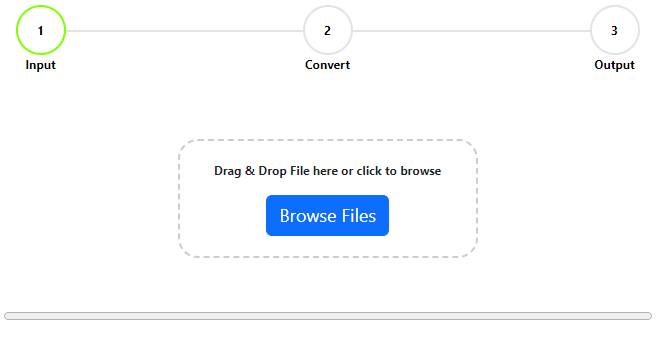Natural Neighbor Interpolation For Beginners
If you are reading this … you should be listening to our podcast!
1. Introduction
In the realm of data science and spatial analysis, interpolation methods hold a pivotal role. They are the bridge that helps us estimate values at unsampled locations, providing insights that raw data alone cannot offer. Among the plethora of interpolation techniques available, the Natural Neighbor method stands out due to its unique approach and effective results. In today’s post, we’ll delve into the fascinating world of Natural Neighbor interpolation, unraveling its mechanics and understanding its edge over traditional methods.
2. A Refresher on Thiessen Polygons
Before diving deep into the Natural Neighbor method, it’s essential to have a foundational understanding of Thiessen polygons, as the former builds upon the concepts introduced by the latter.
Thiessen polygons, also known as Voronoi diagrams, are a basic but powerful tool in the world of spatial analysis. Imagine sprinkling a set of distinct points on a plane. The goal of Thiessen polygons is to allocate every possible location on that plane to the nearest point. This is achieved by drawing boundaries equidistant between each pair of neighboring points, thus creating unique polygons around each of them. Each polygon, therefore, represents all the areas closer to its central point than to any other.
The beauty of Thiessen polygons lies in their simplicity. They offer a clear visual representation of influence areas around sample points. However, while they serve as a solid foundation, in many scenarios, we require a more nuanced approach to interpolation. Enter the Natural Neighbor method.
3. Diving into Natural Neighbor Interpolation
As we transition from the rudimentary world of Thiessen polygons, we venture into the sophisticated realm of the Natural Neighbor interpolation method. This method is like the older, more refined sibling of Thiessen polygons. At its core, it seeks to improve the interpolation technique by providing more weighted, localized, and therefore potentially more accurate estimations.
Natural Neighbor interpolation is not about drawing hard boundaries, as is the case with Thiessen polygons. Instead, it’s about understanding influence and proximity. The method estimates values at unsampled locations by considering how close or far they are from known data points. Rather than simply assigning the value of the nearest known point, the Natural Neighbor method takes into account the influence of multiple neighboring points, offering a more holistic view.
4. The Mechanics of Natural Neighbor Interpolation
To grasp the inner workings of the Natural Neighbor method, envision introducing an unsampled location within your data set. Now, for this location, a temporary Thiessen polygon is formed as if it were an actual data point. This exercise helps in determining which known data points will have the most influence on our unknown location.
Next comes the aspect of weighting. With the temporary Thiessen polygon in place, we can identify overlaps it has with the polygons of the surrounding known data points. These overlapping areas play a crucial role. They are used to compute the weight or influence that each surrounding data point will have on the unsampled location. Larger overlaps indicate closer proximity and therefore, higher influence. On the other hand, smaller overlaps denote lesser influence.
The beauty of the Natural Neighbor method lies in this weighted approach. Instead of making abrupt decisions based on the closest point, it takes a more balanced view, accounting for the influence of multiple points. This ensures a smoother, more accurate estimation, especially in regions with varying data densities.
5. Benefits of the Natural Neighbor Method
The world of spatial analysis is abundant with interpolation methods, each with its unique advantages. However, the Natural Neighbor method brings several distinctive benefits to the table:
- Smooth Surfaces: Unlike methods that produce abrupt transitions between sampled points, Natural Neighbor creates smooth surfaces. This makes it particularly useful for visual representations, ensuring that there aren’t any sudden spikes or drops which can mislead interpretations.
- Weighted Estimations: By factoring in multiple neighboring points and their relative influences, the method offers a balanced estimation. This ensures that the results aren’t skewed by just one or two nearby points.
- Adaptive to Data Density: In regions where data points are densely packed, the method can provide detailed, fine-grained estimations. Conversely, in sparser areas, it smoothly transitions between known values.
- Minimized Errors: By considering multiple influences, the Natural Neighbor method can potentially reduce the error in areas where values might vary in short distances.
6. Natural Neighbor as a Local Method
One of the defining characteristics of the Natural Neighbor interpolation method is its localized approach. But what does this mean?
In the context of interpolation, methods can be broadly classified as either global or local. Global methods consider all available data points, regardless of their distance from the unsampled location, to estimate its value. On the other hand, local methods, like Natural Neighbor, focus on nearby points to make their estimations.
Here’s why the local approach of Natural Neighbor stands out:
- Relevance: By focusing on nearby points, the method ensures that the estimations are influenced by the most relevant data. After all, in many scenarios, local conditions (like topography or climate) can drastically influence values.
- Efficiency: Considering only a subset of points can make the interpolation process faster, especially when dealing with large datasets.
- Minimized Noise: By not factoring in distant points that might have vastly different values, the method can minimize the noise in the interpolated results, leading to a cleaner and more accurate representation.
This local approach, combined with the weighted consideration of multiple nearby points, gives the Natural Neighbor method its distinctive edge in the world of spatial analysis.
7. Applications and Use Cases
The Natural Neighbor interpolation method, while versatile, shines exceptionally in specific applications and scenarios. Here are some noteworthy use cases:
- Environmental Studies: Whether it’s mapping soil nutrients, pollutant concentrations, or groundwater levels, the Natural Neighbor method provides a smooth representation that can capture the subtle transitions in environmental data.
- Geographical Information Systems (GIS): For tasks such as digital elevation modeling, where capturing the nuanced shifts in terrain is vital, this method proves invaluable.
- Meteorological Data Interpretation: When mapping parameters like temperature, humidity, or wind speed across a region, the smooth gradient produced by the Natural Neighbor method provides meteorologists with clearer insights into weather patterns.
- Healthcare and Epidemiology: Mapping disease outbreaks or public health data often requires a sensitive interpolation method that can highlight regions of concern without abrupt boundaries, making Natural Neighbor an excellent choice.
- Resource Exploration: In industries like oil, gas, or minerals, the method can be instrumental in predicting the likelihood of finding resources in unsampled locations based on nearby sample data.
8. Comparison with Other Methods
While the Natural Neighbor method has its strengths, how does it stack up against other popular interpolation methods? Here’s a brief comparison:
- Nearest Neighbor: As the simplest form of interpolation, the nearest neighbor assigns the value of the closest point to the unsampled location. While quick, it often produces a blocky appearance. Natural Neighbor, in contrast, offers a smoother transition by considering multiple points.
- Inverse Distance Weighting (IDW): IDW considers multiple sample points but weights them based on the inverse of their distance to the unsampled location. While it provides smoother results than the nearest neighbor, it may not capture local nuances as effectively as Natural Neighbor in certain scenarios.
- Kriging: This sophisticated method incorporates statistical models to predict values at unsampled locations. Kriging can be highly accurate but demands a deeper understanding of the underlying data’s statistical properties. Natural Neighbor offers a middle ground – more intuitive than Kriging but often more nuanced than IDW.
- Splines: Splines fit a smooth curve through the sample points. While they can produce visually appealing results, they might not always reflect the underlying data as faithfully as the Natural Neighbor method, especially when data is unevenly distributed.
Frequently Asked Questions (FAQs) about Natural Neighbor Interpolation:
- What is Natural Neighbor Interpolation?
- An interpolation method that estimates values at unsampled locations based on the proximity and influence of multiple neighboring points.
- How does Natural Neighbor Interpolation differ from Thiessen Polygons?
- While Thiessen Polygons divide space into distinct regions closest to sample points, Natural Neighbor Interpolation uses weighted values from several neighboring points to provide smoother, more nuanced estimations.
- Why choose Natural Neighbor over other interpolation methods like IDW or Kriging?
- Natural Neighbor offers a balance between simplicity and accuracy, producing smooth surfaces without requiring a deep statistical understanding of the data.
- In which scenarios is Natural Neighbor Interpolation particularly useful?
- It’s beneficial in situations where a smooth representation of data is required, such as in environmental studies, GIS, meteorological data mapping, healthcare, and resource exploration.
- Is Natural Neighbor Interpolation a global or local method?
- It’s a local method, meaning it primarily considers nearby points for its estimations, ensuring relevance and efficiency.
- How does the weighting work in Natural Neighbor Interpolation?
- The method computes the weight or influence of surrounding known data points based on the overlap areas of temporary Thiessen polygons created for unsampled locations.
- Does the Natural Neighbor method always produce more accurate results than other methods?
- Not necessarily. While it provides smoother and often more locally accurate results, the best interpolation method always depends on the specific data set and the goals of the analysis.
- What are the computational demands of Natural Neighbor Interpolation?
- While the method is more computationally intensive than simpler methods like Nearest Neighbor, it’s often more efficient than complex methods like Kriging, especially when dealing with large datasets.
- Can Natural Neighbor Interpolation handle irregularly spaced data?
- Yes, it is particularly adept at handling datasets where sample points are not evenly distributed, offering smooth transitions even in areas with varying data densities.
- Are there any drawbacks or limitations to the Natural Neighbor method?
- Like all interpolation methods, it has its limitations. For instance, it may not capture certain data nuances as effectively as statistical methods like Kriging in some scenarios.





